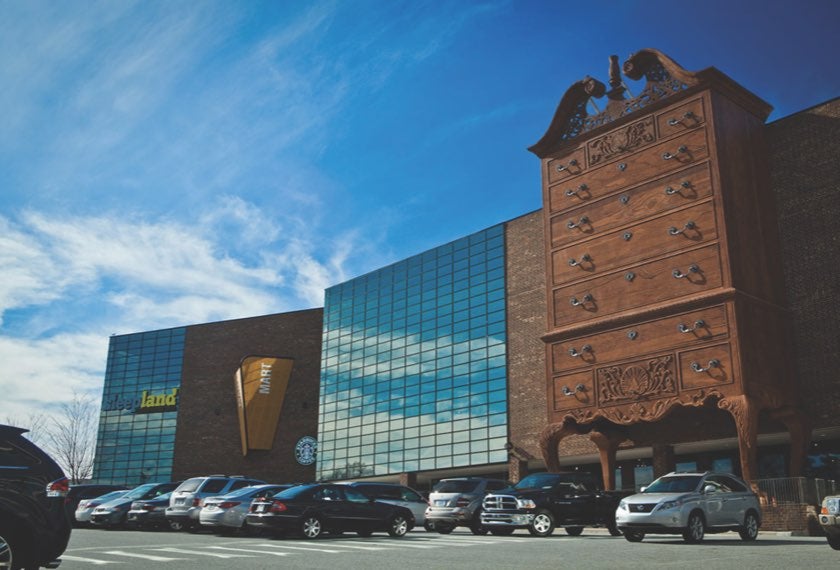The name Furnitureland South, with an emphasis on land, is an apt one. The North Carolina institution and self-proclaimed “world’s largest furniture store” takes up a jaw-dropping 1.3 million square feet, almost 30 acres. At that size, it feels more correct to refer to it as a “land,” as opposed to a “store.” Most stores don’t require weeklong stays to browse.
In this episode of the Business of Home podcast, host Dennis Scully chats with Furnitureland South CEO Jeff Harris to hear about the origins of the unique business and what lessons he’s learned along the way.
Founded in 1969 by Harris’s father as a (relatively) small furniture retailer, the business grew into the behemoth it is today with the help of both Harris and his brother Jason, largely through a boom time in the 1990s that saw the company get bigger and bigger, becoming the de facto local showroom for furniture manufacturing brands based out of High Point. At the beginning of the decade, Furnitureland was roughly a $12 million dollar business—by the year 2000, it was netting $178 million in revenues.
Despite a broader trend toward small, curated retail, Harris says Furnitureland South’s size is its strength. Partially, the sheer novelty of being the biggest furniture store in the world lends the company a kind of intrigue. But he says it goes deeper than that: “I like to think we have the best of both worlds. We have this amazing emporium of product, and yet we have these design consultants who are always asking: ‘How can I simplify the process, how can I make this easy?’ [Clients] don’t want to spend a week. Even though they can!”
Listen to the episode and check out some takeaways below. If you like what you hear, subscribe to the podcast here. This episode was sponsored by Resource Furniture and Universal Furniture.
A year-round High Point?
Two months ago, a number of brands announced an initiative to keep their High Point showrooms open year-round. Harris is against it, for obvious competitive reasons (if furniture brands open throughout they year, they’d be competing with Furnitureland for North Carolina sales). However, more broadly, he’s skeptical that it would work. “We don’t think that’s a viable solution. It comes down to finances and logistics. It costs money to staff these showrooms. It costs money to have logistics to support, and then you’ve got to simplify how in the world it would all work,” he says. “Listen, we’re the largest furniture store in the world and it’s tough [for us] to shop market. I can’t imagine a consumer trying to navigate those halls.”
Great furniture will always be sold in person
To be clear, Furnitureland South does have a website, and one that Harris has spent considerable time and money developing. However, fundamentally he’s dubious that online sales will overtake in-person sales for his company. “I just don’t think that many people are selling the good stuff online,” he says. “At the end of the day, I believe that most people want to see the furniture and talk with someone who can assure them this is the right way to spend your money. It’s a very tactile product. … We continue to see that that shopper wants to talk to someone at a minimum before they click and buy.”
Catering to the trade
Furnitureland is primarily a retail operation, selling to the general public. However, in the last year, its trade program has shot up 40 percent. That’s partially, says Harris, because of High Point not holding a Spring Market, meaning designers didn’t always have convenient access to their favorite brands. But he also says that over the years, Furnitureland has finessed its designer business to work with a variety of pricing structures (designers can either get trade pricing or have clients buy and then get a commission) in order to make the company a more attractive proposition—as well as sharing best practices with their designer clientele. “We share with other designers what works and pitfalls to be aware of,” he says. “We take ownership and pride in being able to show these designers: Hey, you should be making money with your client. And we can show you what other people who do what you do, do, how they do it, and how they make money.”
Homepage image courtesy of Furnitureland South




























